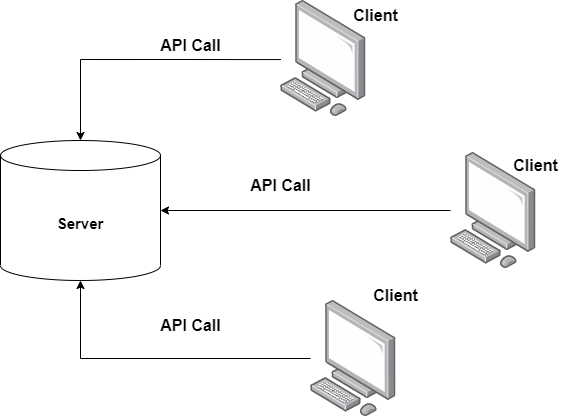2 Tier Architecture in DBMSDBMS ArchitectureDBMS Architecture describes how the Database is designed, and the way users access the Database. As it aids in the designing of the Database, development of the Database, implementation, and maintenance of the Database Management System, it also has an impact on the Database's performance. When designing a structure, architects organize and create the arrangement of the various parts that make up the entire structure, as well as their connections. The performance of the structure is defined by the architecture, which also dictates the complex's structural integrity and robustness as a whole. In the scenario of the Database Management System, this idea is equally valid. As it aids in the designing of the Database, development of the Database, implementation, and maintenance of the Database Management System, the DBMS architecture has an impact on the Database's performance. The DBMS Architecture serves as the foundation for the Database Management System design. It outlines the organization and connections between users and a particular Database System. For proper operation, Database Management Systems are separated into several levels of abstraction. These modules and layers explain how the DBMS is built and how it works. We can maintain and manage the Database Management System with the applications of different architectures depending on what way the user is connected to the Database System and accessing the Database, as a Database Management System isn't always available directly by the user or an application. These architectures are defined according to tiers; that is, the number of levels in the DBMS's structure determines which category the DBMS architecture belongs to. A tier is a physical unit where a process or a program is executed. Database servers, application servers, clients, etc., are a few examples. Layers are logical units that deal with how data or code should be structured. Data access, controller, etc., as examples. DBMS is divided into one layer by 1-Tier Architecture, divided into two layers by 2-Tier Architecture, divided into three layers by 3-Tier Architecture, and in the same way by n layers. In the same way, DBMS is divided into n layers by an n-Tier Architecture of the DBMS. The complexity and security of the DBMS structure increase as the number of layers in the design rises, along with the level of abstraction. These layers do not depend on each other. Therefore changes made to one layer do not affect the other layers that are included in the architecture. 2-Tier Architecture:The essential idea of client-server architecture is comparable to Two-tier DBMS Architecture. In a Two-tier Architecture, the server manages the database functionality. It makes it possible for the clients to use the Database through APIs (Application Programming Interfaces) over a direct internet connection. For example, ODBC (Open Database Connectivity) and JDBC( Java Database Connectivity). When using an application to access the DBMS, the Two-tier DBMS Architecture is used. Through the use of API calls, client-side applications can connect directly to the database server, separating the application from the Database in terms of functionality, programming, and design. 
The following are the key benefits of a two-tier architecture over one tier:
Example of Two-Tier DBMS Architecture:Think of a time when we visited a bank to get some cash. The banker will check whether there is a sufficient balance after inputting the withdrawal amount and account information on the withdrawal slip by making an API call using his credentials to access the server-side Database. A two-tier DBMS is an example of a client-server architecture. The following are the key drawbacks of the two-tier DBMS architecture:
The server is under more pressure as there are more users. Decreasing the DBMS's performance, which in turn affects the client-side application's performance.
This design is prone to assaults since the client and server systems are directly connected. Highlights of Two-Tier Architecture:
|
 For Videos Join Our Youtube Channel: Join Now
For Videos Join Our Youtube Channel: Join Now
Feedback
- Send your Feedback to [email protected]
Help Others, Please Share









